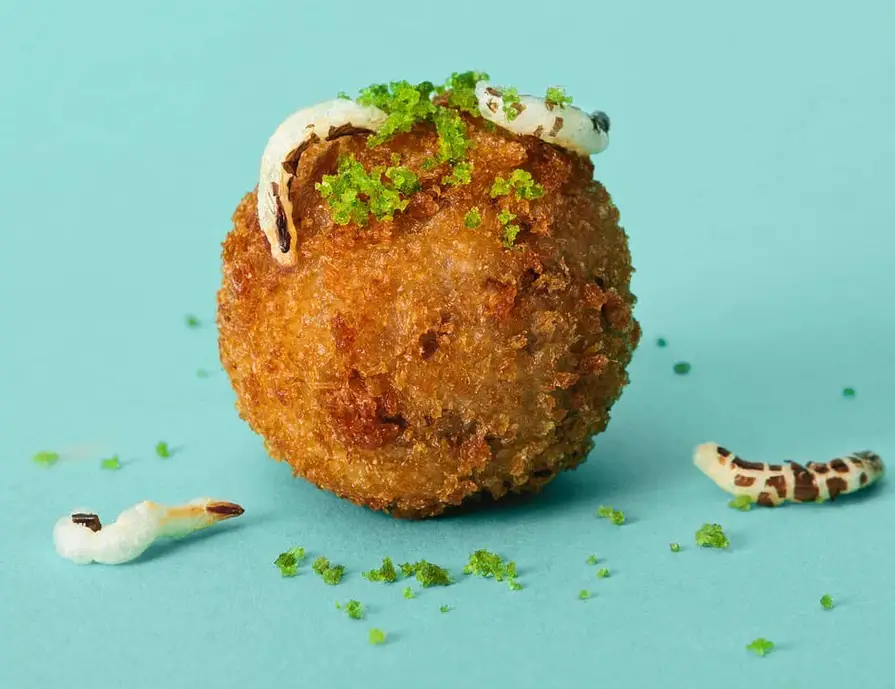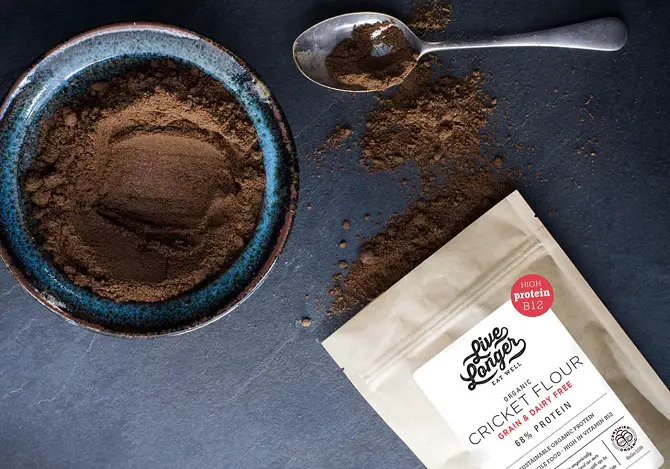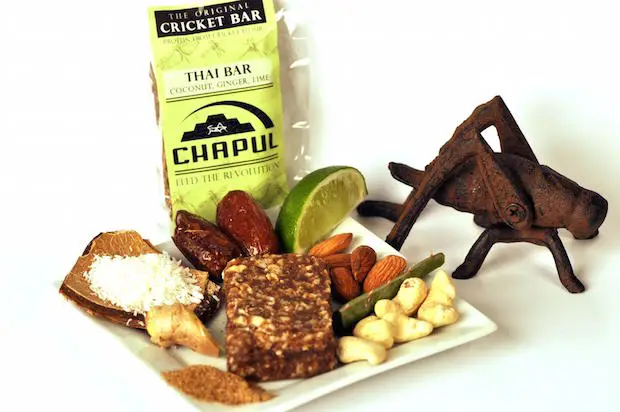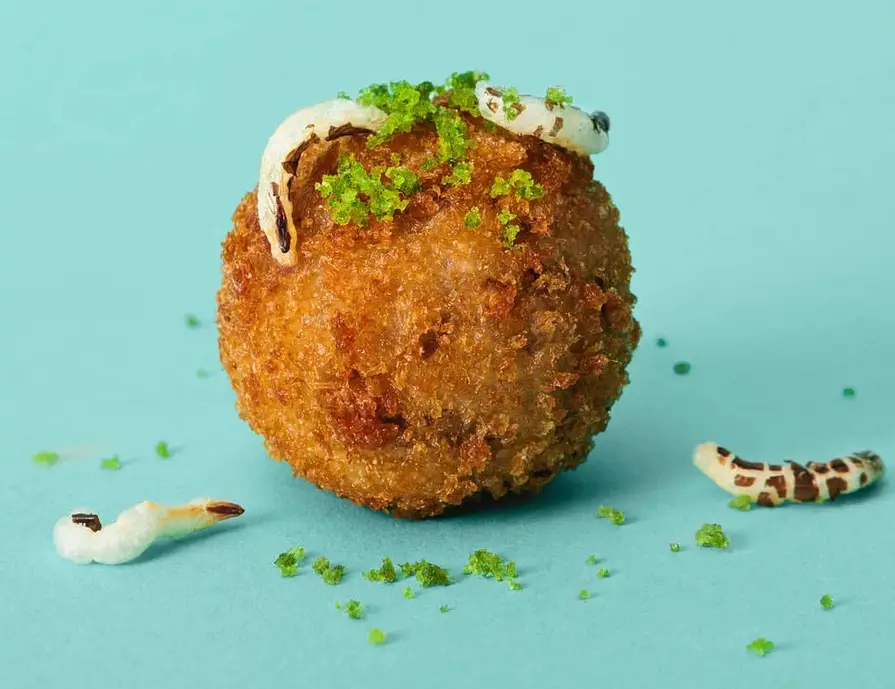Please, Bug Out: 8 Things You Should Know About Cooking with Bugs
Please, Bug Out: 8 Things You Should Know About Cooking with Bugs

The sticker shock of eating bugs has worn off. Western civilization may pride itself on its culinary heritage and prowess, its forward-thinking innovations in the gastronomic arena, but the fact remains that there’s major food tradition that 80 percent of the world’s population celebrates that we don’t: eating bugs.
While we have definitely been coming around to the concept in recent years—assisted, no doubt, by the the fact that the U.N. Food and Agriculture Organization has encouraged it as the sustainable protein choice for our planet’s future—we’re definitely behind the learning curve. Sure, insects are now popping up at well-respected restaurants in Chicago and you can even find chili-lime roasted chapulines (a.k.a. grasshoppers) on sale at Seattle Mariners games as a beer nut alternative, but we’re still way behind in terms of insect cookery being less of a novelty and more a part of everyday life.
To that end, SmithsonianChannel.com and the Smithsonian Earth App are debuting a new six-part series called “Bug Bites” (premiering Monday, Aug. 27) that chronicles biologist and food-lover Haley Chamberlain Nelson as she partners up with experts to learn about cooking with bugs. And to celebrate, we chatted with one of the show’s stars, chef and cookbook author David George Gordon, better known as The Bug Chef, about the insect culinary arts. Here are eight cool things we learned.
Beware of Bright Colors: The-Can-I-or-Can’t-I Rule of Thumb
According to a report published in 2013 by the U. N. Food and Agriculture Organization, there are nearly 2,000 species of edible insects on the planet. As much as we like having a lot of options to consider, one crucial question remains: How are supposed to know which of all the insects out there are actually included in the 1,900+ item menu? For that, Gordon has a handy rule of thumb: If it’s brightly colored, don’t eat it. “The easiest rule is that insects that are brightly colored, like a ladybug, are not good for consumption. In bug language that means, ‘don’t eat me, I don’t taste good.’ Bugs that blend in naturally, they need the camouflage because they taste good.” But, aside from color, “most bugs aren’t a problem unless they’ve been eating some kind of poisonous plant or pesticide.”

Live Longer
Bug-Eating Beginner? Try Crickets
Feeling a little intimidated by the idea of learning how to cook with insects? Consider crickets your “starter” or “gateway” bug. According to Gordon, “it’s pretty hard to mess up cooking with crickets. You can’t overcook them because they armor over their entire body; they’re sealed up, there’s no way for moisture to escape.” And, bonus, he adds this pro tip: “Buy week-old cricket nymphs instead of adults. They don’t have their wings and are less crunchy and more tender.” (Apparently Conan O’Brien said they tasted like veal when he tried them on his show.)
Solutions for the Squeamish
Still a little squeamish about the idea of eating bugs? No judgment. Dip your toe into the insect culinary arts by opting to start off with processed products that have less of a visual “ick” factor like cricket or mealworm flour, black ant powder, or grasshopper salt. There are also a lot of companies now that make insect-based energy bars, chocolate bars, and protein powders if you’re less into the DIY cooking thing.
Ice, Ice, Baby: Buy Flash-Frozen or Fresh and Then Freeze
If you’re in the market for edible insects, Gordon says that “the easiest thing is to go online and start noodling around. Entomo Farms in California, for example, just raises millions of crickets for human consumption. It’s a little nuts but you can even find gluten-free crickets online.” While he notes that while a lot of bugs—caterpillars, beetles, grasshoppers, crickets, etc.—are sold dried purely out of ease of shipping, he likes to buy fresh or flash-frozen. It’s important, though, that if you do buy fresh, freeze the insects first and then sort as freezing is the most humane way to kill them. Aside from shopping online—EntoMarket and Rocky Mountain Micro Ranch are favorites—he also recommends looking for edible bugs in hispanic markets, the frozen foods section of Asian markets, and in herbal medicine shops in international districts.
Good for Your Daily Dose of Vitamins, Minerals, and More
Proponents of eating bugs are quick to talk about the associated health benefits, and with good reason. “All are incredibly rich in protein,” explains Gordon, “the same amount as in ground beef.” He notes that crickets are rich in calcium and omega 3, termites have a ton of iron, and that bee larvae are high in vitamins A and B. But that’s not all: “In China, black ants are sold as medicine. They increase sexual vigor and are basically like a natural Viagra; They also are supposed to slow the aging process. You could try them in a pear salad, they have a very complex flavor, think of it as putting pepper on your salad.”

Heritage Radio Network
Let the Flavor Be Your Guide
When it comes to cooking with bugs, it seems that flavor profile is a more important consideration than technique or method (though Gordon warns that caterpillars will pop in a wok). Grasshoppers and crickets are more neutral in flavor, and therefore are great for showcasing whatever seasoning you give them, whereas something like bee brood are described as having a similar taste to almonds or peanuts. And flies that develop on cheeses will take on the flavor of their host, while other flies that grow around water habitats might taste like fish or duck. Stinkbugs, ironically, add an apple flavor when used in cooking. Long story short, do your research on the flavor of your chosen insect before assigning it a recipe.
Shellfish Allergy? Stay Away
Fun fact: If you suffer from a shellfish allergy, your “Cannot Eat List” also includes insects. Both shellfish and insects are classified as arthropods, having an exoskeleton and segmented bodies, and have proven to share some common allergens. So to be on the safe side, let’s just say if you have some not-so-pleasant reactions to eating shrimp, crab, and lobster, it’s probably a good/safe idea that you abstain from the entomophagy (a.k.a. eating bugs) trend.
The Sustainable Choice
At the very least, we should all be able to get behind and support the idea of eating bugs for the sheer fact that it’s actually a very sustainable, good-for-the-planet thing. “What’s so funny is that we have this culture of disliking bugs and yet if we didn’t have insects the planet would grind to a halt in a couple of weeks. Not only are they a superfood, but they’re very easy to raise and require a lot less resources, food, and water than more common livestock like chickens or cattle.”
Related Video: Try Edible Insects at this Authentic Mexican Eatery
[page_popup id=”1″]



